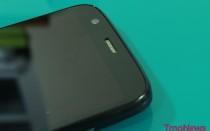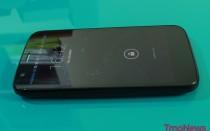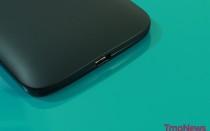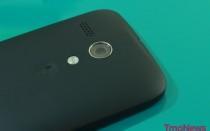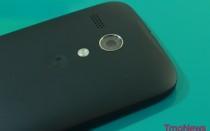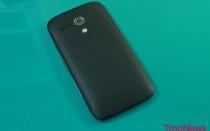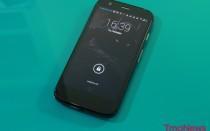Motorola Moto G – Unboxing and First Impressions [Video]
Once I found out the Moto G would be available in a model supporting T-Mobile’s bands, I’ve been meaning to get hold of it, and give you guys the rundown and review it. Today was the day I finally managed to snag one.
Let’s get this out the way first: This phone isn’t meant to compete with the likes of the Galaxy S4, HTC One or even the Nexus 5. Just a quick glance down the spec list will show you that much. But, once you start comparing it with the handsets available at the sub-$200 price point, it starts to look incredible.
What immediately struck me when picking it up was how solid it feels in hand. It doesn’t feel plasticcy, it has a nice curved back with a soft-touch textured feel on the rear shell. This rear shell is designed to be removable, but once clipped in place fits perfectly with the rest of the device, giving it an almost seamless feel. I may seem like I’m going on over the same points over and over again, but, I could write “it feels so well made” 100 times, and I still don’t think it’d properly emphasize how much that surprised me.
I’m used to handsets in this price range being cheap looking, poorly put together with small, low resolution screens. The Moto G feels like a proper phone. The quad-core processor makes light work of the (almost) stock Android software. Opening menus and switching apps is swift and painless. The 4.5-inch screen is big, and plenty sharp enough with a resolution of 1280 x 720, although it could do with a boost to its brightness, saturation and contrast levels.
Although I’ve only had a few hours with it, I have to say that I’m left impressed. It’s a $300 phone at a $180 price point. But it does have its trade-offs. I mentioned the display not being quite lively enough, and the loudspeaker quality isn’t the best either. Motorola saved costs in a number of places, for instance, not including a chipset capable of LTE connection. The fastest you’ll get with this is HSPA+. Although my own personal model is the international one, the US GSM model does support both 1700 and 1900 frequencies for 3G/4G HSPA, so you should still get great speeds across the States.
I’ll spend a few more days with it before writing up my full thoughts. But if first impressions are anything to go by, this next week shouldn’t be too difficult at all.

